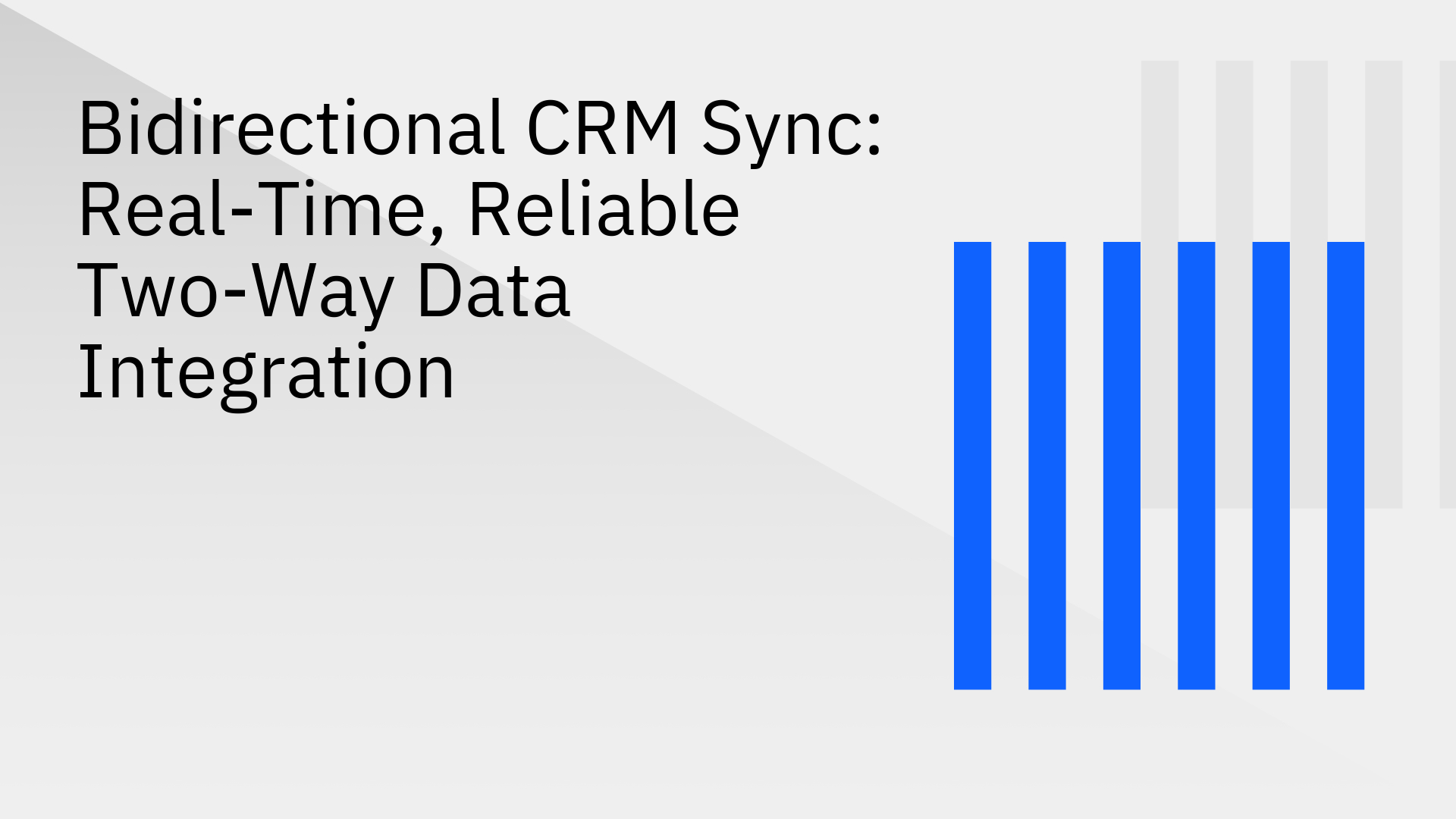

In today's business environment, data is fragmented across a growing stack of specialized applications, from CRMs and ERPs to marketing automation platforms. This creates data silos, which inevitably lead to inconsistent information, operational inefficiencies, and disjointed customer experiences.
When your sales team sees one version of a customer's history and your support team sees another, you're not just losing productivity How Bidirectional Sync Boosts Reliability and Cuts Latencyyou're risking revenue and reputation. Bidirectional CRM synchronization offers a powerful solution by eliminating data latency, boosting data reliability, and creating a single, authoritative source of truth across your entire tech stack.
Bidirectional synchronization, often called two-way sync, is a data integration process where information flows in both directions between two or more connected systems, ensuring that when a record is updated in one system, the change is automatically reflected in the others [3]. This creates a mirrored, consistent state across all platforms.
This stands in stark contrast to unidirectional (one-way) sync, where data only moves from a designated source to a target application, with the target having no ability to send updates back [2]. While one-way sync is useful for simple data-pushing tasks like reporting, it fails to create the unified data environment modern businesses require for daily operations.
For CRM data, which is constantly accessed and modified by sales, marketing, support, and finance teams, true bidirectional synchronization is a necessity. It ensures every team has the same, up-to-the-minute view of the customer. You can learn more with this Bi-directional Sync: An Overview.
Poor data quality characterized by outdated information, duplicate records, and incomplete fields—has a severe and measurable impact on business performance. It erodes efficiency, leads to flawed strategic decisions, and damages customer relationships.
The financial toll is staggering. On an individual level, organizations estimate that bad data costs them around $12.9 million each year [6]. Other research from Gartner suggests this figure could be as high as $15 million annually, potentially costing a company up to 25% of its revenue [7]. This isn't just a hypothetical number; it represents wasted marketing spend, lost sales opportunities, and the high cost of manual data cleanup.
A true bidirectional CRM synchronization solution addresses the core drivers of data decay by automating updates and maintaining consistency across all connected platforms. This delivers several key advantages:
By implementing an automated two-way data sync for your CRM, ERP, and databases, you establish a single source of truth that your entire organization can trust.
A common but flawed approach is attempting to replicate two-way sync by setting up two opposing one-way syncs. While this may seem logical, it introduces significant technical challenges and risks that purpose-built platforms are designed to avoid. This "fake" bidirectional approach often leads to:
A dedicated bidirectional synchronization platform is the only reliable way to avoid these pitfalls. Trying to jury-rig a solution is a hidden integration challenge that ultimately creates more problems than it solves.
When evaluating a bidirectional synchronization platform, look for these critical, actionable features that separate consumer-grade tools from enterprise-ready solutions.
For mission-critical operations, you need data to sync in milliseconds, not minutes or hours. An enterprise-grade platform should provide real-time performance by default. However, it must also offer the flexibility to configure the sync frequency (e.g., hourly, daily) for less time-sensitive workflows, allowing you to optimize performance and API usage based on specific business needs.
Silent sync failures are unacceptable. A reliable platform must provide actionable tools for managing data flows. Key features to look for include:
Your sync solution must be able to grow with your business. It should handle millions of records without requiring you to manage complex infrastructure. Furthermore, a truly smart platform like Stacksync includes intelligent API management that automatically respects rate limits and adjusts to traffic. This prevents your sync from hitting API quotas and failing, ensuring continuous and reliable operation. With the right platform, you gain all of these Stacksync features for real-time bi-directional data sync efficiency.
Stacksync is an enterprise platform purpose-built for real-time, scalable, and reliable two-way synchronization. It eliminates integration complexity and allows you to build a trustworthy data foundation in minutes, not months.
Here’s how you can implement true bidirectional sync with Stacksync:
For more technical details on setup and best practices, refer to our Two-way sync documentation.
Data silos and latency are not just technical inconveniences; they are significant business liabilities that cost money and inhibit growth. Bidirectional CRM synchronization provides a clear and effective solution by creating a single, reliable source of truth across all your operational systems.
By moving beyond manual processes and fragile, makeshift integrations, you can improve data reliability, empower your teams with consistently accurate information, and drive better business outcomes. Investing in a robust, purpose-built platform like Stacksync is a critical step toward building a scalable and trustworthy data infrastructure that will serve as the foundation for future growth.
Ready to see it in action? Learn how you can optimize two-way data synchronization between your CRM, ERP, and databases and start your free trial today.